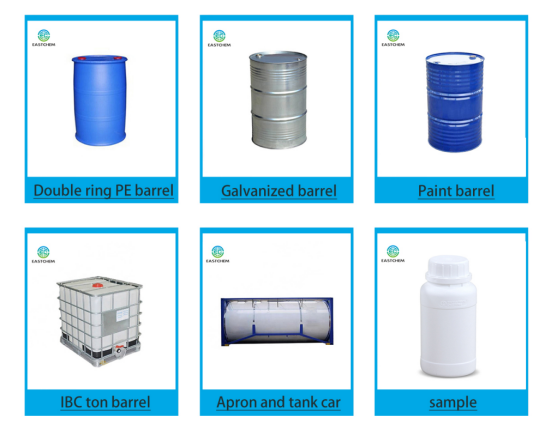methoxy polyethylene glycol 2000
- EASTCHEM
- China
- One week
- 5000MT per annum
- 25322-68-3
Polyethylene glycol series products are non-toxic, non-irritating, slightly bitter in taste, have good water solubility, and have good compatibility with many organic components.

Product introduction
Polyethylene glycol(PEG), also known as polyethylene oxide (PEO) or polyoxyethylene (POE), refers to an oligomer or polymer of ethylene oxide. Depending on the molecular weight, polyethylene glycol can be a liquid or a low-melting solid. Due to the influence of chain length, polyethylene glycols of different molecular weights often have different physical properties and applications, but most polyethylene glycols have similar chemical properties. Those with a relative molecular mass between 700 and 900 are semi-solid, and those with a relative molecular mass of 1,000 and above are light white waxy solids or flake-like paraffin or flowing powder.
Product specification
Test items | Analyticalmethods | Standard | Result |
Appearance(25℃) | Current EP | Clear,viscous,colourless oralmost colourless,hyg | Conforms |
Identification | Current EP | A | Conforms |
Current EP | B | Conforms | |
Current EP | C | Conforms | |
Appearance of solution | Current EP | Meet requirements | Conforms |
Completeness and Color ofSolution | Current USP | Meet requirements | Conforms |
Acidity or alkalinity | Current EP | Meet requirements | Conforms |
pH(5% in water) | Current USP | 4.5~7.5 | 6.1 |
Average Molecular Weight | Current USP | 380~420 | 419 |
Viscosity(20℃,m Pa·S) | Current EP | 105~130 | 124 |
Viscosity(98.9℃,cst) | Current USP | 6.8~8.0 | 7.6 |
Hydroxyl value | Current EP | 264~300 | 268 |
Reducing substance | Current EP | Meet requirements | Conforms |
Ethylene Glycol andDiethylene Glycol(%) | Current USP | ≤0.25 | 0.05 |
Ethylene Glycol andDiethylene Glycol(%) | Current EP | ≤0.4 | 0.05 |
Formaldehyde(ppm) | Current EP | ≤15 | Conforms |
Ethylene oxide(ppm) | Current EP | ≤1 | <0.04 |
Dioxan(ppm) | Current EP | ≤10 | < 2 . 5 9 |
Free Ethylene Oxide(μg/g) | Current USP | ≤10 | <0.04 |
1,4-Dioxane(μg/g) | Current USP | ≤10 | < 2 . 5 9 |
Water(%) | Current EP | ≤2.0 | 0.05 |
Sulfated ash(%) | Current EP | ≤0.2 | ≤0.2 |
Residue on Ignition(%) | Current USP | ≤0.1 | ≤0.1 |
Heavy Metals(ppm) | Current USP | ≤5 | Conforms |
Grade | Pharmaceutical grade | ||
Conclusion | According to Current EP、Current USP standard,the results meet therequirements. | ||
Product application
Polyethylene glycol has excellent lubricity, moisturizing and dispersing properties, and can be used as a softener and antistatic agent. It is widely used in cosmetics, pharmaceuticals, chemical fibers, rubber, plastics, papermaking, paints, electroplating, pesticides, metal processing and food processing. It has a wide range of applications in other industries.
PEG400 is a liquid. Because it is stable and not easy to deteriorate, it is most suitable for soft capsules. It is widely used in liquid preparations (such as oral liquids, etc.) and is a good solvent and thickener. PEG4000, PEG6000, and PEG8000 can be used to make tablets, pills, suppositories, film coatings, etc. During the tableting process, PEG can not only improve the tablet's ability to release drugs, but also has good plasticity. It can make the surface of the tablet shiny and smooth, not easily damaged, and can also prevent sugar-coated tablets from sticking to each other.
Polyethylene glycol can be used to modify drug proteins, protect drug molecules, and extend their half-life. Polyethylene glycol molecules can change the biomembrane structure of various types of cells, causing the lipid molecules of the plasma membrane to evacuate and reorganize at the contact point between the two cells, thereby causing the cells to fuse, forming hybrid cells, and obtaining some special hybrid plants.
Polyethylene glycol is also a food additive and is often used for coating candies and chocolate products. It can be used as a coating agent in food, and can also be used as a dispersant, binder, plasticizer, coating agent, lubricant, carrier solvent and flavor auxiliary.

Packaging & Storage
The chemical properties of polyethylene glycol are stable in the air and in solution, but those with a molecular weight below 2000 are easily hygroscopic. Not suitable for microbial growth and not prone to rancidity.
Polyethylene glycoland its aqueous solution can be sterilized by autoclaving, filtration or gamma rays. If solid state is sterilized by dry heat at 150°C for 1 hour, oxidation may be induced and degradation may occur.
It should be kept in a cool, dry place and stored in an airtight container. Liquid grade polyethylene glycol can be stored in stainless steel, aluminum, or glass containers.

FAQ
Q1: Can your company accept the special requirements of your customers?
A1: Of course, we can.
Q2: Why is the quote offered different from the sticker price?
A2: As we know, prices of chemicals are not fixed, they fluctuate with the markets.
Q3: Is there any discount?
A3:of course. The price is negotiable. You will get discount and the most favorable price if you order large quantity goods or order with some other products together.
Q4: What's the shipping way?
A13:Express such as EMS, DHL, TNT, Fedex, UPS, air transportation, sea transportation,etc per your request.
Q5: Are you a factory or trading company?
A5: We are manufacturer of some chemical raw materials and trading company, we can help buyers to decide which products are there best choice, and all your inquiry will be replyed within 24 hours
Q5: Could you send me all your price list?
A5: As we have more than thousands of items. Please inform the items you are interested in, and you will get the price list you want.